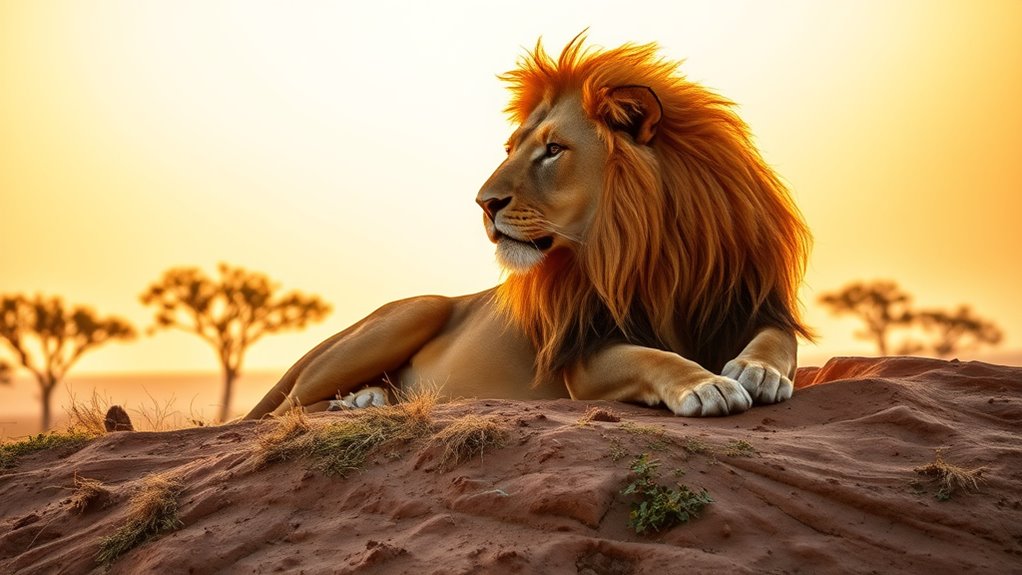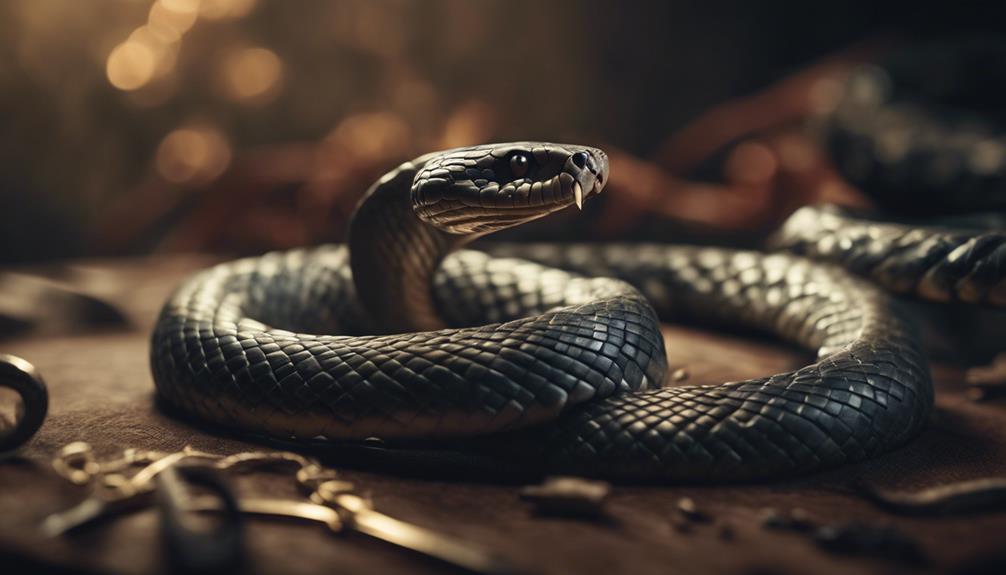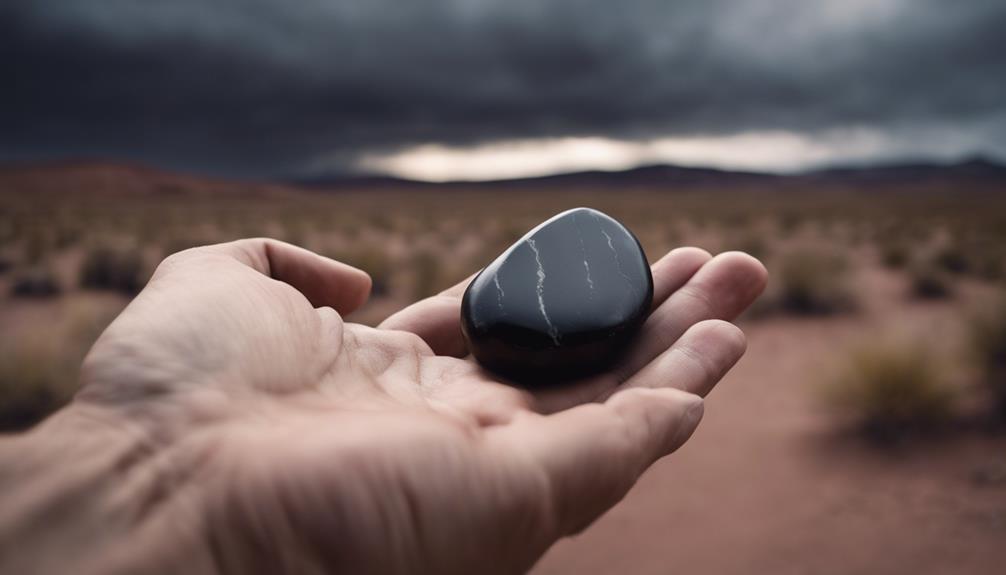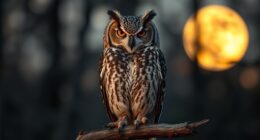Lions symbolize courage, strength, and royalty across many cultures. They represent leadership, bravery, and divine authority in art, heraldry, and myths. Whether seen as guardians in Chinese statues or as regal symbols in European coats of arms, lions embody qualities we admire and aspire to. Their powerful imagery reminds us of human ideals of nobility and protection. To discover more about their rich symbolism and cultural significance, keep exploring this fascinating animal’s legacy.
Key Takeaways
- Lions symbolize strength, bravery, and leadership across many cultures and traditions worldwide.
- In heraldry, lions represent nobility, authority, and valor, often appearing on coats of arms and banners.
- African and Asian societies view lions as icons of resilience, protection, and divine power.
- Artistic depictions of lions reinforce their status as regal guardians and symbols of royal authority.
- Overall, lions embody universal human ideals of courage, nobility, and the right to lead.

Lions have long been symbols of strength, courage, and leadership across cultures. When you explore the lion symbolism in art, you’ll notice how artists have captured their majestic presence to convey power and nobility. From ancient sculptures to modern paintings, lions are often depicted as regal figures, embodying qualities of dominance and protection. They serve as visual metaphors for kings, warriors, and divine authority, reinforcing their role as symbols of leadership. The cultural significance of lions spans continents and eras, making them universal icons of authority and valor. In many societies, lions are associated with divine protection, serving as guardians of sacred spaces or royal tombs. You might see their images carved into the walls of ancient temples or engraved on royal insignias, emphasizing their role in spiritual and political symbolism.
In African traditions, lions are revered as symbols of courage and resilience. They represent the strength of community and the bravery needed to face life’s challenges. If you look at African masks or textiles, you’ll find lion imagery woven into stories of heroism and ancestral power. Similarly, in Asian cultures, lions often symbolize protection and prosperity. Chinese guardian lion statues, called “foo dogs,” stand at temple entrances, warding off evil spirits and welcoming good fortune. These representations reinforce the perception of lions as protectors, bridging the spiritual and the worldly. In European heraldry, lions are frequently featured on coats of arms, denoting noble lineage and valor. When you see a lion emblazoned on a shield or a banner, it signifies strength, courage, and the right to rule. These symbols have persisted for centuries, underlining their deep-rooted cultural importance.
Understanding the cultural significance of lions helps you appreciate why they continue to inspire human imagination and symbolism. They are not just animals but powerful symbols woven into the fabric of human history. Whether in myth, art, or tradition, lions embody qualities that resonate universally: leadership, bravery, and authority. Their image has evolved but remains consistently linked to notions of sovereignty and protection. When you encounter lion motifs in different contexts, recognize how they represent more than just physical strength—they signify the enduring human desire for courage, greatness, and the right to lead. This timeless symbolism explains why lions have held such a prominent place in cultural narratives across civilizations, reminding us of the qualities we aspire to embody.
Frequently Asked Questions
How Do Different Cultures Interpret Lion Symbolism?
You’ll find that different cultures interpret lion symbolism through unique lenses. In African lion mythology, they often represent strength and protection, while in Chinese culture, lions symbolize power and good fortune. European cultures see lions as royal symbols, embodying leadership and bravery. By exploring the cultural symbolism of lions, you discover a rich tapestry of meanings, from guardianship to divine authority, highlighting their significance across diverse societies worldwide.
What Are the Historical Origins of Lion Imagery in Royalty?
You’ll find the origins of lion imagery in royalty trace back to ancient mythology and medieval heraldry. Ancient civilizations, like Egypt and Mesopotamia, used lions to symbolize power and protection, while medieval heraldic coats of arms featured them to denote bravery and nobility. These images reinforced a ruler’s authority, connecting their reign to the strength and majesty that lions represent, solidifying their status across history.
Are Lions Used as Symbols in Modern National Emblems?
You might think lions are still common in national emblems, but they mainly appear due to medieval heraldry influences. Countries like England and Sri Lanka incorporate lion symbols, often inspired by historical lion statues and coats of arms. This tradition emphasizes strength and sovereignty, connecting modern symbols to centuries-old imagery. So, while less frequent today, lions continue to represent power and pride in some national emblems, echoing their royal roots.
How Do Lions Symbolize Leadership Beyond Courage?
You see lions symbolize leadership beyond courage by reflecting their social structures and hierarchy. The dominant lion, or alpha, leads the pride, demonstrating authority, strength, and strategic decision-making. You can learn that true leadership involves understanding group dynamics, protecting your members, and maintaining order. Lions’ social behavior exemplifies effective leadership, showing that guiding others with confidence, responsibility, and a clear hierarchy fosters stability and respect within any community or organization.
What Is the Significance of Lion Symbolism in Literature and Art?
You see lion symbolism in literature and art as a powerful allegory for majestic strength and regal symbolism. It captures the essence of leadership, nobility, and authority, drawing viewers into stories of heroism and kingship. Through majestic depictions, artists and writers evoke feelings of awe and respect, emphasizing the lion’s role as a universal emblem of sovereignty and resilience that resonates deeply across cultures and eras.
Conclusion
As you reflect on the lion’s symbolism of courage and royalty, remember that this majestic creature embodies strength beyond the surface. But what if there’s more to its legend—something hidden, waiting to be uncovered? The lion’s true power might just lie in the mysteries it guards. Will you dare to look deeper and discover what lies beneath the regal face? The next revelation could change everything you thought you knew about this king of beasts.










